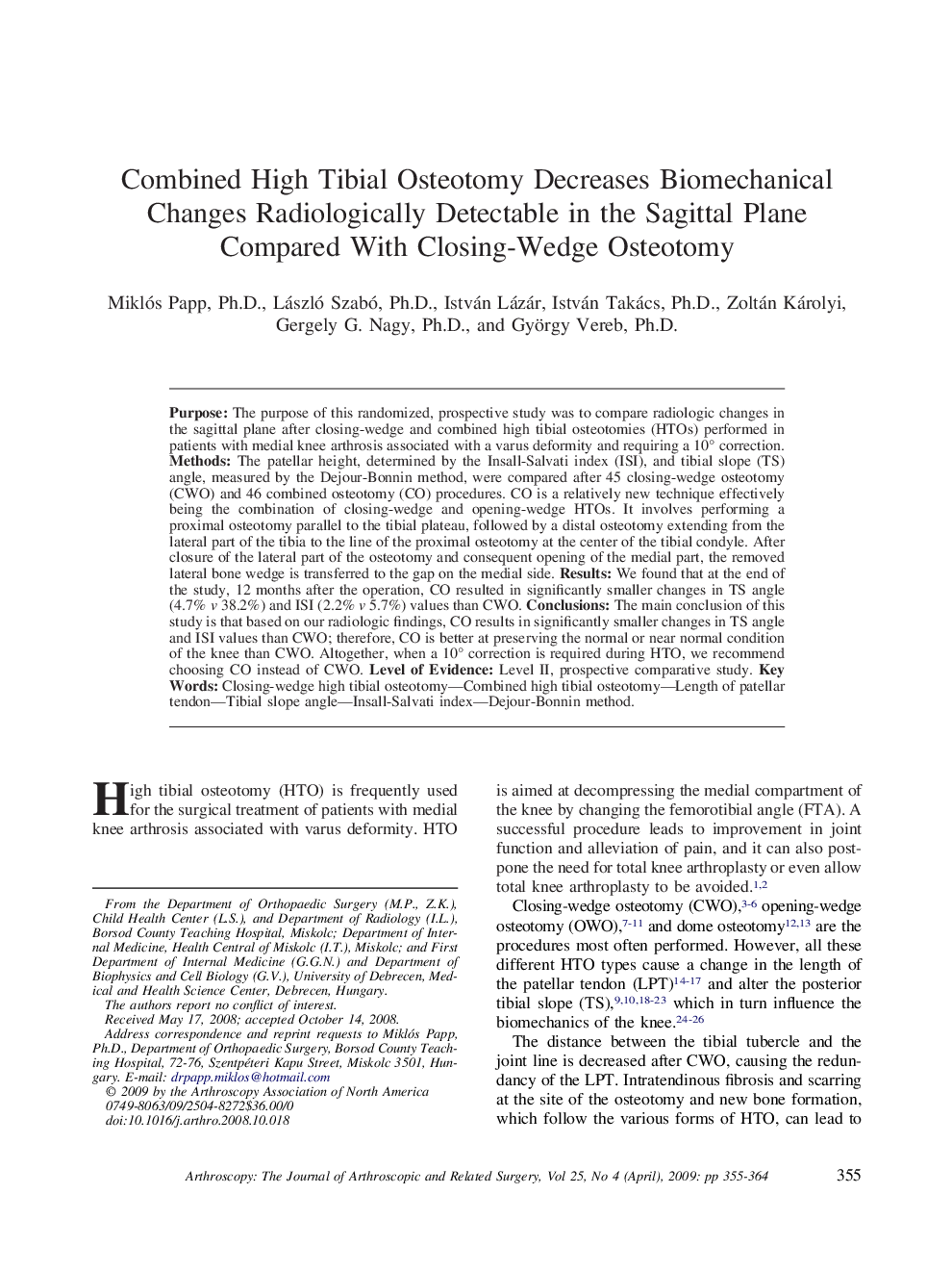| Article ID | Journal | Published Year | Pages | File Type |
|---|---|---|---|---|
| 4046509 | Arthroscopy: The Journal of Arthroscopic & Related Surgery | 2009 | 10 Pages |
PurposeThe purpose of this randomized, prospective study was to compare radiologic changes in the sagittal plane after closing-wedge and combined high tibial osteotomies (HTOs) performed in patients with medial knee arthrosis associated with a varus deformity and requiring a 10° correction.MethodsThe patellar height, determined by the Insall-Salvati index (ISI), and tibial slope (TS) angle, measured by the Dejour-Bonnin method, were compared after 45 closing-wedge osteotomy (CWO) and 46 combined osteotomy (CO) procedures. CO is a relatively new technique effectively being the combination of closing-wedge and opening-wedge HTOs. It involves performing a proximal osteotomy parallel to the tibial plateau, followed by a distal osteotomy extending from the lateral part of the tibia to the line of the proximal osteotomy at the center of the tibial condyle. After closure of the lateral part of the osteotomy and consequent opening of the medial part, the removed lateral bone wedge is transferred to the gap on the medial side.ResultsWe found that at the end of the study, 12 months after the operation, CO resulted in significantly smaller changes in TS angle (4.7% v 38.2%) and ISI (2.2% v 5.7%) values than CWO.ConclusionsThe main conclusion of this study is that based on our radiologic findings, CO results in significantly smaller changes in TS angle and ISI values than CWO; therefore, CO is better at preserving the normal or near normal condition of the knee than CWO. Altogether, when a 10° correction is required during HTO, we recommend choosing CO instead of CWO.Level of EvidenceLevel II, prospective comparative study.
